There is plenty of information around about how to plan a Joshua Tree National Park vacation. For all sorts of information about the park, check out my Joshua Tree National Park Guides.
The thing is that most of it focuses on what you should do when you visit Joshua Tree National Park.
This guide is different. I will share with you what you should AVOID doing when you plan a Joshua Tree visit. This isn’t meant to scare you; it’s meant to help you be fully prepared when visiting Joshua Tree National Park. I think it’s helpful to be aware of mistakes to avoid in the planning stage.
I’m a national park expert and have extensive knowledge of Joshua Tree National Park. I’ve seen many people make mistakes (and I’ll admit I made a few myself!) that have impacted their trip. So now I’m happy to share what I’ve learned from their (and my) experiences so that you can avoid these common pitfalls.
Let’s take a look at the biggest mistakes to avoid when you plan a trip to Joshua Tree National Park.
TOP TOUR: Book a half-day hike to Joshua National Park now
TOP HOTEL PICK: Check availability now
FIND THE CHEAPEST CAR RENTAL: Search Discover Cars for the best deals
FIND THE CHEAPEST FLIGHTS: Search Skyscanner for the best deals
GET TRAVEL INSURANCE: Get insured with Travelex before you go
TAKE AN AUDIO TOUR: Buy an audio tour now
No time right now to discover 7 mistakes to avoid when planning a trip to Joshua Tree National Park? Pin It and save it for later:

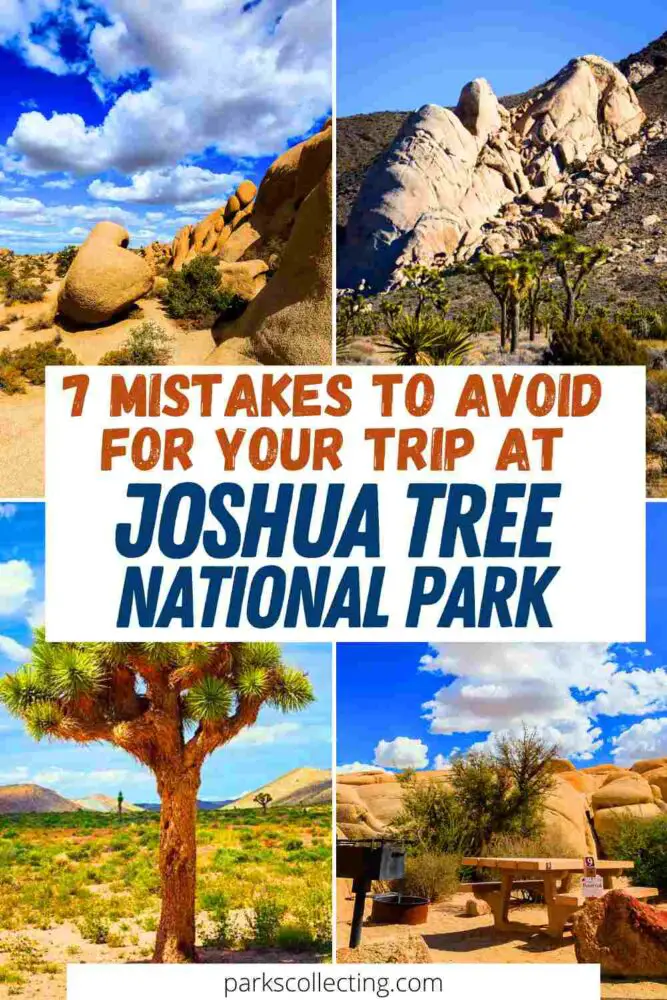
Please note this post may contain affiliate links, which means we may receive a commission, at zero cost to you, if you make a purchase through a link. Please see our full Disclosure for more information. If you have any questions, please contact me.
Subscribe to regular updates with tips for planning, travel inspiration and trip ideas and get instant access to the free PDF of this guide:
“7 Mistakes To Avoid When Planning A Trip to Joshua Tree National Park”
#1 Overlooking extreme temperatures
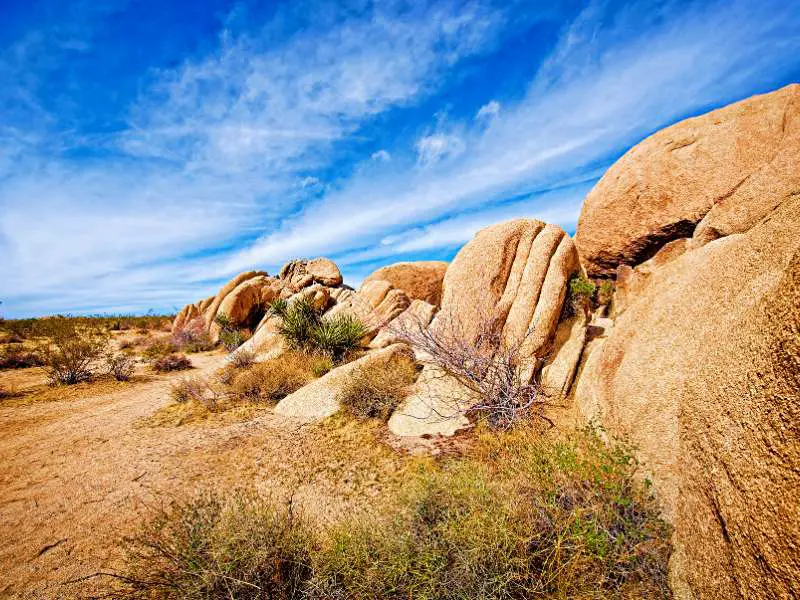
When setting out on Joshua Tree National Park travel, a big mistake to avoid is underestimating the extreme temperatures that can occur in the desert environment.
The park is has a high desert climate, which means daytime temperatures often exceed 100°F in the summer months. Conversely, nighttime temperatures can plummet, especially outside of the summer season, catching unprepared travelers off guard with chilly conditions.
To ensure a safe and comfortable visit, you need to plan for these temperature fluctuations. During the warmer months, aim to explore the park early in the morning or later in the afternoon to avoid the midday heat. Always carry plenty of water, wear appropriate sun protection, and dress in layers to adapt to the changing temperatures. Remember that the dry desert air can dehydrate you quickly, so regular hydration is crucial.
By respecting the desert’s harsh climate and preparing accordingly, you’ll be able to enjoy the stark beauty of Joshua Tree National Park while keeping health and safety in the forefront.
#2 Forgetting about the strong winds
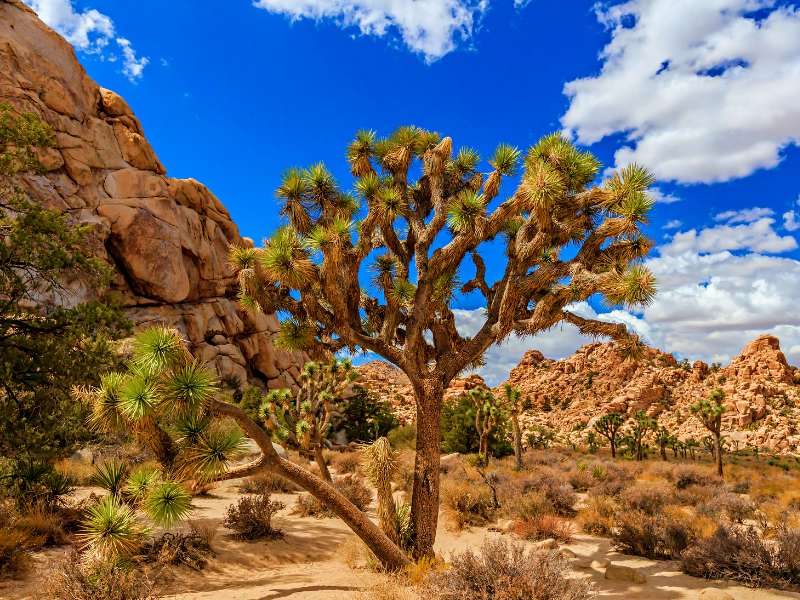
A frequently overlooked aspect of Joshua Tree National Park travel is the intensity of the winds that can sweep through the area. The park is prone to strong and gusty winds, which can arise suddenly and without much warning. These winds can not only make conditions uncomfortable but can also pose a risk to safety, particularly for those camping or hiking in exposed areas.
When planning your trip, prepare for the possibility of windy conditions. If you’re camping, ensure your tent is well-secured and designed to withstand strong gusts. Stow lightweight items away to prevent them from blowing away, and be aware that cooking outdoors may be challenging in windy conditions.
When hiking, choose trails with natural windbreaks, such as canyons, and wear protective eyewear to guard against dust and debris.
Additionally, strong winds can increase the risk of wildfires in the park. Pay attention to park notices and fire regulations, and be prepared to change your plans if necessary for safety reasons.
#3 Not filling up your gas tank

An important yet sometimes neglected aspect of Joshua Tree trip planning is ensuring you have a full gas tank before entering the park. Joshua Tree National Park is huge and remote, with no gas stations within its boundaries. The last thing you want is to be stranded in the desert with an empty gas tank.
So, before you set off on your adventure, fill up in nearby towns such as Joshua Tree, Twentynine Palms, or Yucca Valley. Not only will this prepare you for the long drives within the park, which can span over hundreds of miles, but it also provides a cushion should you decide to explore some of the more outlying attractions or if you take a wrong turn.
#4 Underestimating the terrain

Another mistake to avoid when exploring Joshua Tree National Park is underestimating the rugged and often treacherous terrain. With its iconic Joshua trees and massive boulders, the park’s beauty is undeniable, but the terrain can be more challenging to navigate than it first appears. Trails often traverse rocky ground, uneven surfaces, and require scrambling over boulders.
Wearing hiking boots with good ankle support and grip helps to prevent slips, trips, and falls. I also recommend studying trail descriptions and difficulty ratings before setting out, as some paths may be more strenuous than you expect.
READ MORE: Guide To The Best Hiking Shoes
In addition, bring plenty of water, use sun protection, and allow more time than you think you might need to navigate the trails.
#5 Not bringing your own water
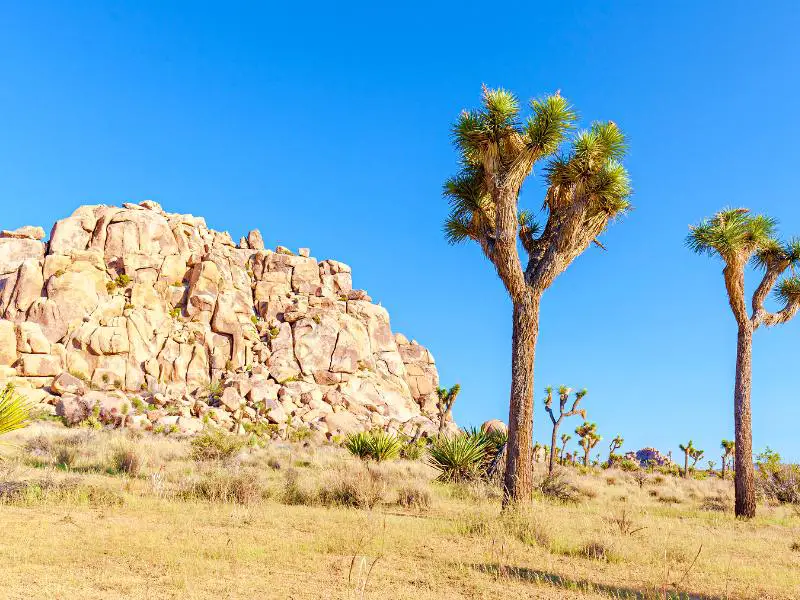
Another thing to remember when visiting Joshua Tree National Park is the importance of bringing enough water. Underestimating your water needs in this desert environment can lead to dehydration and other heat-related illnesses, which can quickly become dangerous.
Potable water is scarce throughout the park, with very few locations offering water access. The few water sources are sometimes non-operational, so you shouldn’t rely on them as a primary water source.
Always fill up your water containers in nearby towns before entering the park. And plan to bring more water than you think you will need. The general recommendation is to carry at least one gallon of water per person, per day, and even more if you plan on engaging in strenuous activities like hiking or climbing.
It’s also a good idea to keep extra water in your vehicle as a backup. I like this collapsible water container as it takes up very little space when empty, but keeps plenty of water in your vehicle.
#6 Not planning for limited cell service

When preparing for a trip to Joshua Tree National Park, it’s important to plan for the limited cell phone coverage within the park’s boundaries. Coverage can be spotty or completely non-existent in many areas, so relying on your phone for navigation or in case of emergencies is not a viable option.
Before you arrive, I recommend downloading the national park app, which has tons of information including maps, trail guides, and educational content. Follow the prompts within the app to download the necessary offline content, so you have access to these resources without needing a cell signal.
In addition to the app, bring physical maps (and possibly a compass) as backups for navigation. Inform someone of your itinerary and expected return time, and consider carrying a satellite communicator or personal locator beacon if you plan to venture into remote or less-traveled areas of the park. These devices can provide a lifeline to emergency services when cell phones fail.
I like the National Geographic topographic map.
READ MORE: Best handheld GPS for hiking
#7 Getting a late start
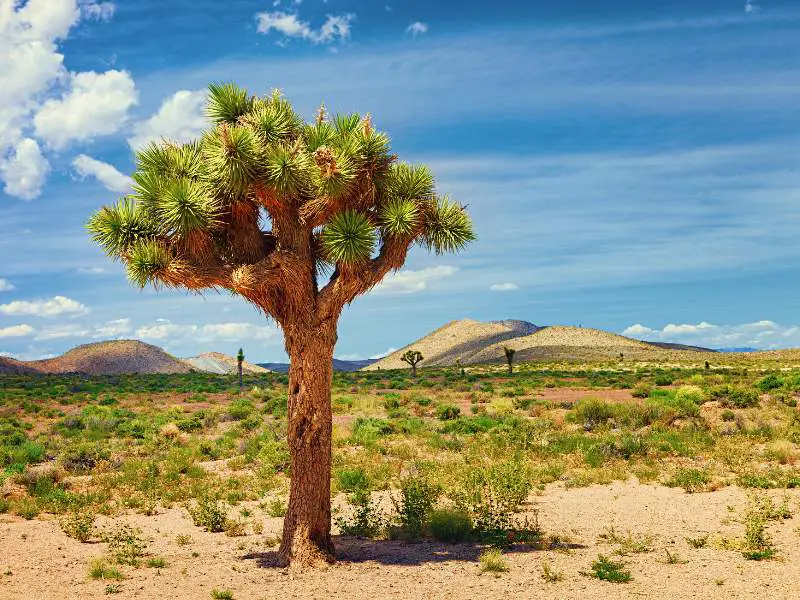
Another common pitfall in Joshua Tree National Park itinerary planning is getting a late start to your day. The park’s popularity means that key attractions can get crowded, especially on weekends and holidays at peak months (especially March and April).
To truly enjoy the serenity of the desert and have a chance at solitude on the trails or at popular sites, you’ll need to arrive early, ideally before 9:00 AM. This early start not only helps you beat the heat and the crowds but also increases your chances of finding convenient parking.
Parking can be a challenge in Joshua Tree National Park, and during peak times, you may need to select your hike or destination based on where parking is available.
It’s important to park only in designated areas, as creating new parking spots by driving over vegetation can damage the fragile desert ecosystem, even if the plants appear dead. The park’s commitment to preserving its natural beauty means that when parking areas are full, it may become drive-through only, limiting your access to certain areas.
Consider visiting during the middle of the week and steering clear of holiday periods. By planning your Joshua Tree National Park itinerary with these tips in mind, you’ll set yourself up for a more peaceful and enjoyable visit, ensuring you get the most out of this unique and captivating landscape.
READ MORE: 10 Best Hikes in Joshua Tree National Park
Travel Insurance
You should, of course, always have travel insurance, but especially when doing things like hiking. Travel insurance also covers things like medical emergencies, lost or stolen property, trip cancellation, and emergency repatriation. If you want to learn more about all this, check out my Guide to Buying Travel Insurance (on my other blog) before getting your insurance.
A great insurance option is Travelex. It has coverage for all you’ll need. You can compare Travel Insurance plans here or get a quote right now:
Enjoy your Joshua Tree vacation!
Additional Planning Resources for Joshua Tree National Park
Joshua Tree National Park Guide
The 10 Best Hikes in Joshua Tree National Park
The Closest Airports To Joshua Tree National Park
The 20 Best Vacation Rentals near Joshua Tree National Park
Fun Facts about Joshua Tree National Park
How to Get to Joshua Tree National Park
Best Time To Visit Joshua Tree National Park
Subscribe to regular updates with tips for planning, travel inspiration and trip ideas and get instant access to the free PDF of this guide:
“7 Mistakes To Avoid When Planning A Trip to Joshua Tree National Park”
Do you have any other tips for planning a trip to Joshua Tree, California? I’d love to hear about them. Join my private Facebook group National Parks Collectors and comment and let me know (you can also pick up extra planning tips, share your photos and stories with other national park lovers and more).
If you liked this post about the Joshua Tree National Park guide, please share the love and Pin It to your Joshua Tree National Park board!


Are you just starting to think about taking a national parks trip? Get Inspiration
Are you starting to plan a trip to Joshua Tree National Park? Read my Guide to Joshua Tree National Park
Are you looking for a place to stay near Joshua Tree National Park? Find a vacation rental near Joshua Tree National Park
Are you ready to book your trip? Use these Planning and Booking Resources
About the Author
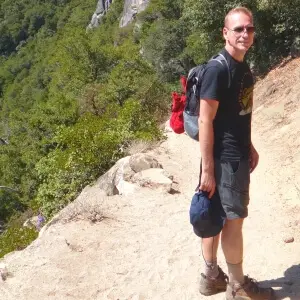
James Ian is a national park, camping and hiking expert.
He has dedicated his life to travel, visiting more than 80 countries, all 7 continents and most of the national parks in the United States. With over 35 years experience in the travel industry, James has worked on cruise ships, at resorts and hotels, and as a travel planner who’s helped hundreds of people plan successful trips to US national parks.
Based on his experience visiting our national parks multiple times, in-depth research and expertise as a travel planner, James has published detailed itineraries for most of the major national parks in the US. These itineraries, as well as in-depth park guides, comprehensive camping and hiking gear reviews and buying guides, and helpful packing lists and gift guides will help you have your own incredible trip to US national parks without stress and hassle.
As a national park expert, James has contributed to many publications, including USA Today, Time Business News, Savoteur, Best Trip, and Wired.
Parks Collecting is a participant in the Amazon.com Services LLC Associates Program, an affiliate advertising program designed to provide a means for sites to earn advertising fees by advertising and linking to amazon.com. Amazon and the Amazon logo are trademarks of Amazon.com, Inc. or its affiliates. As an Amazon Associate I earn from qualifying purchases.
